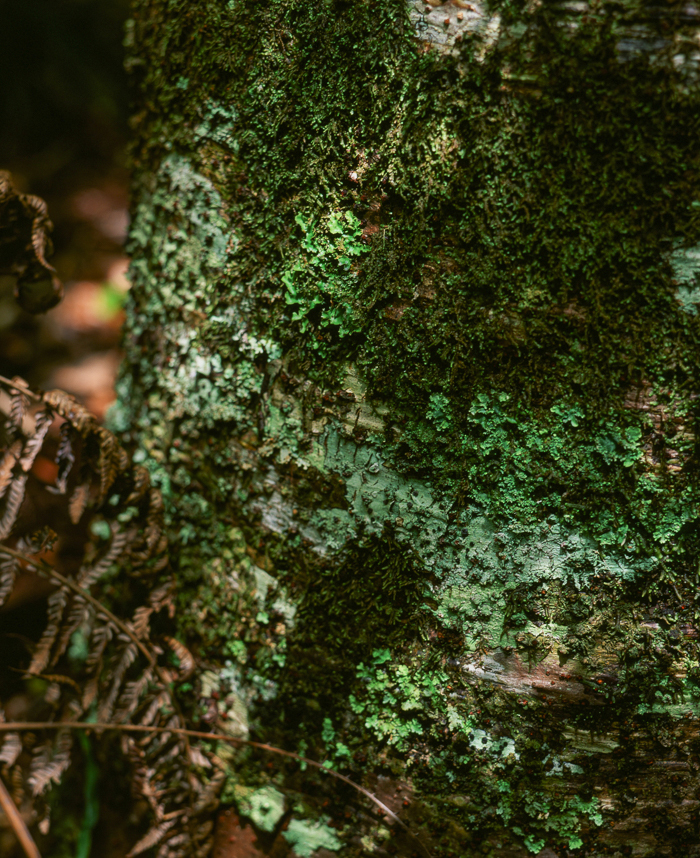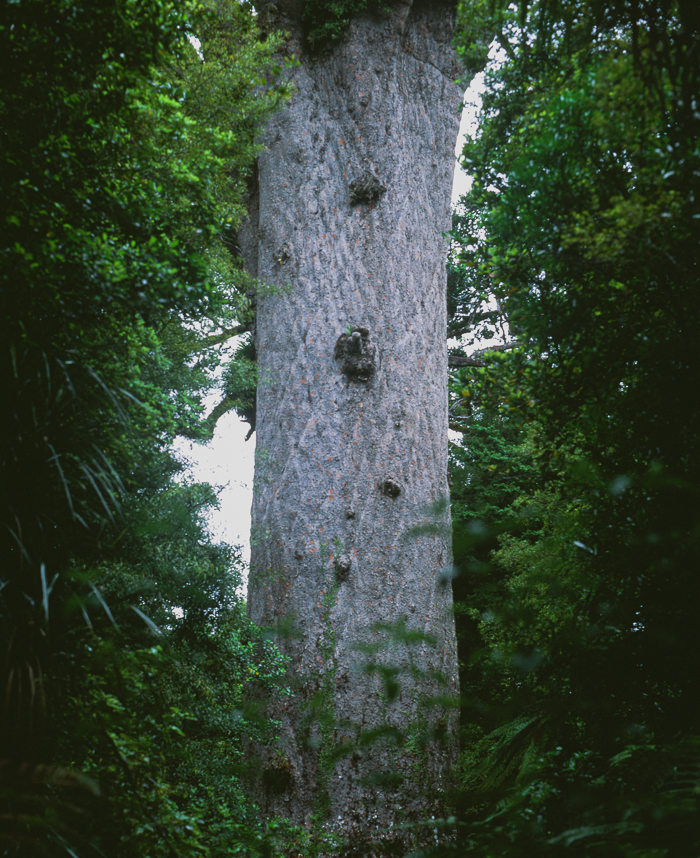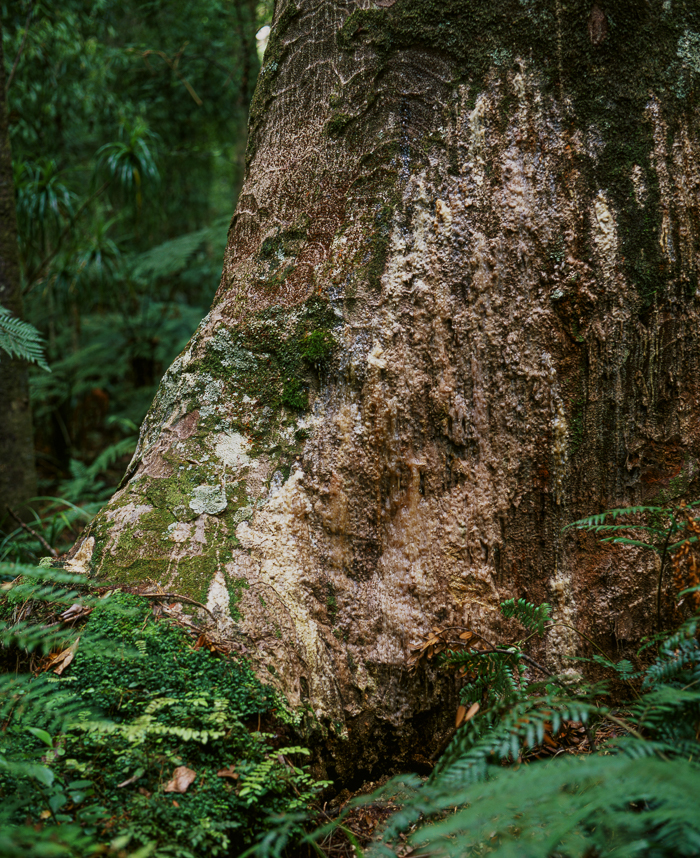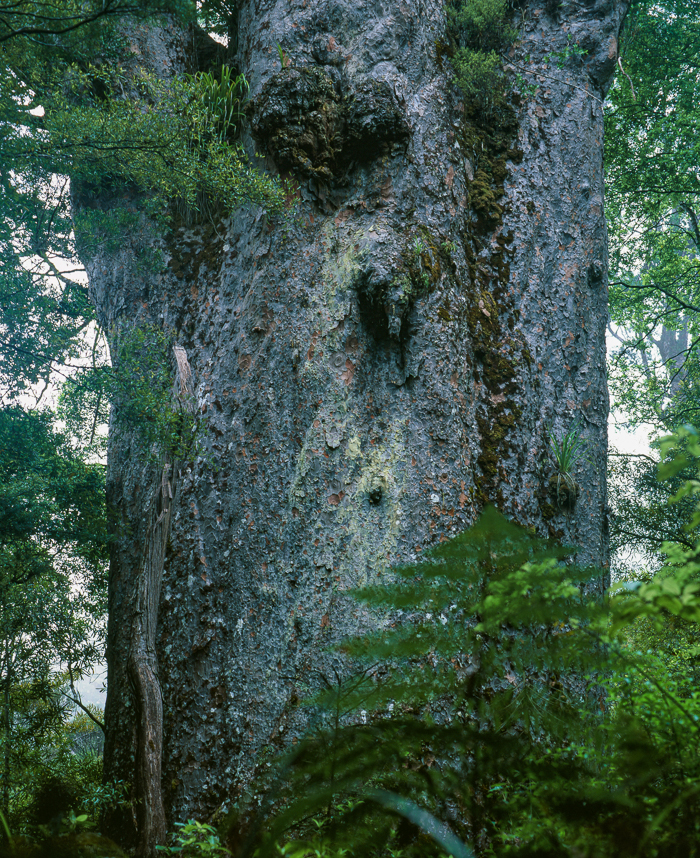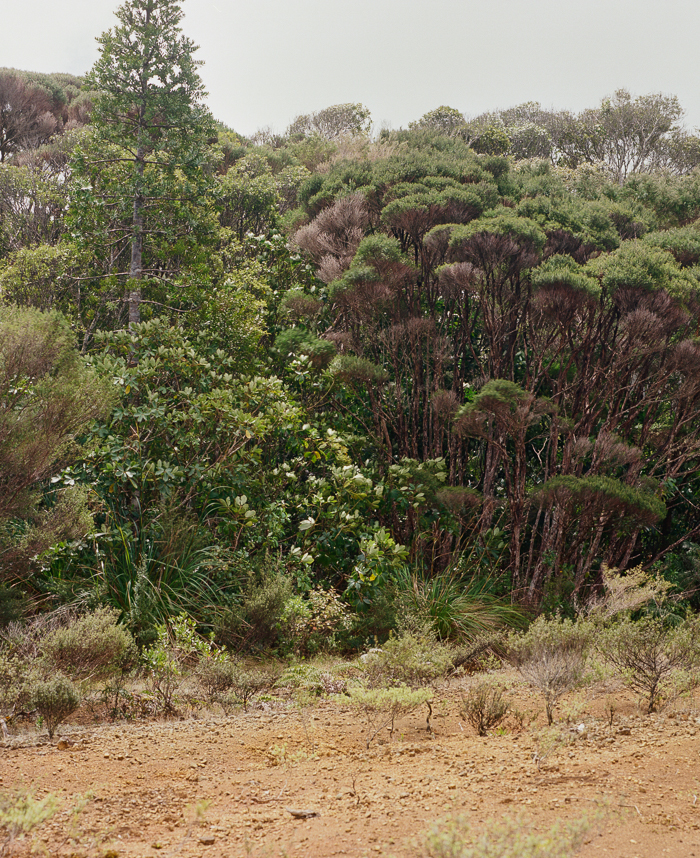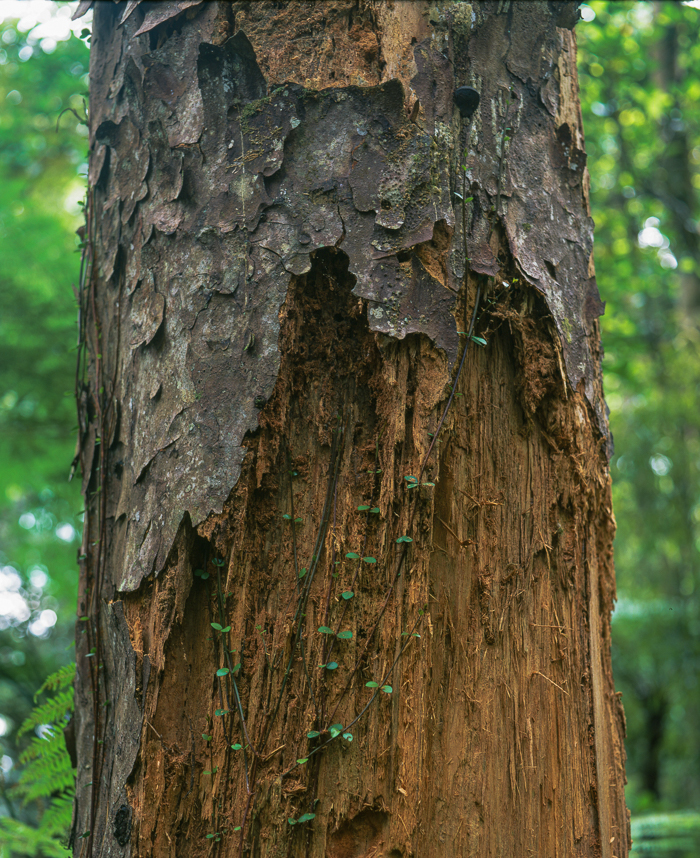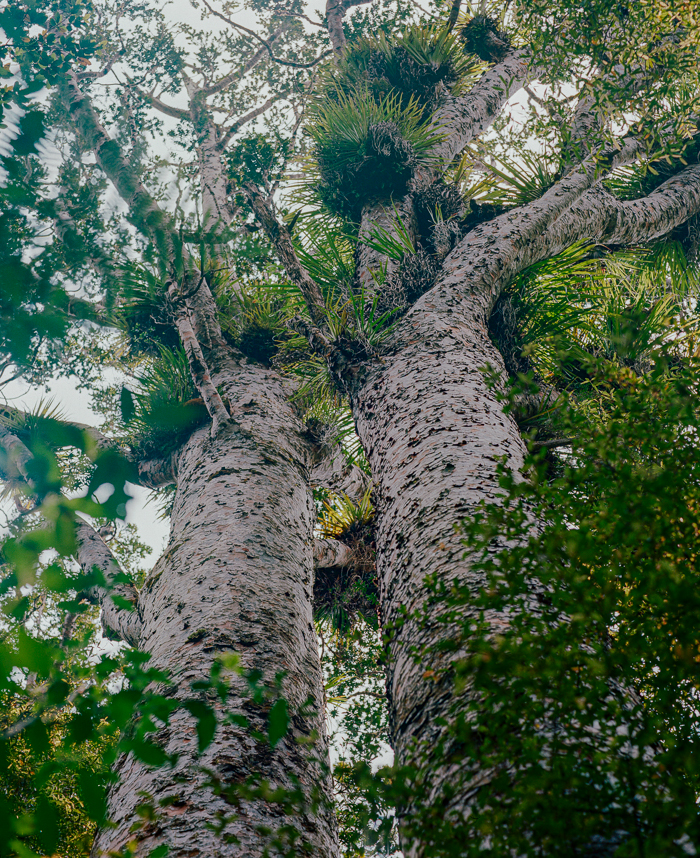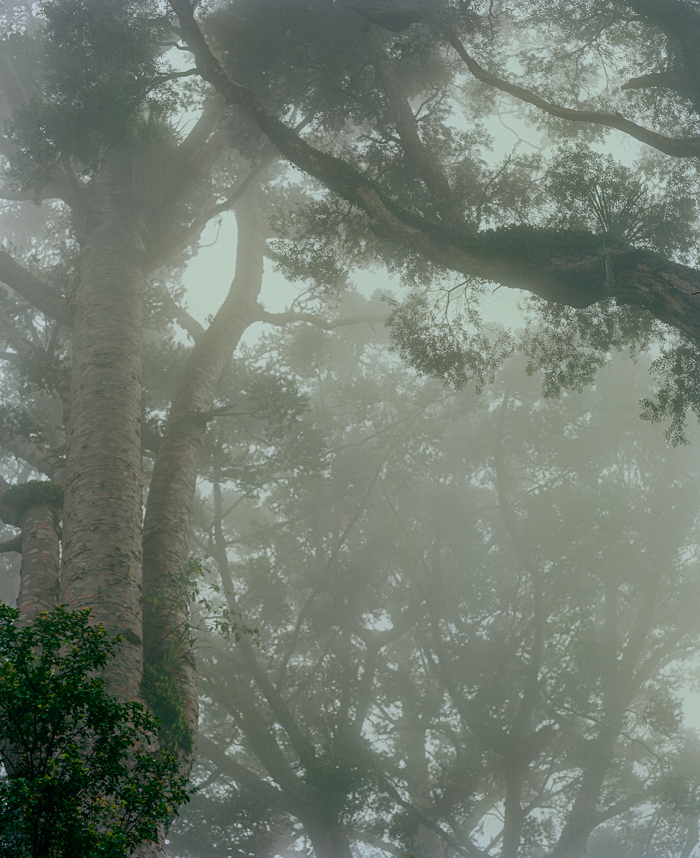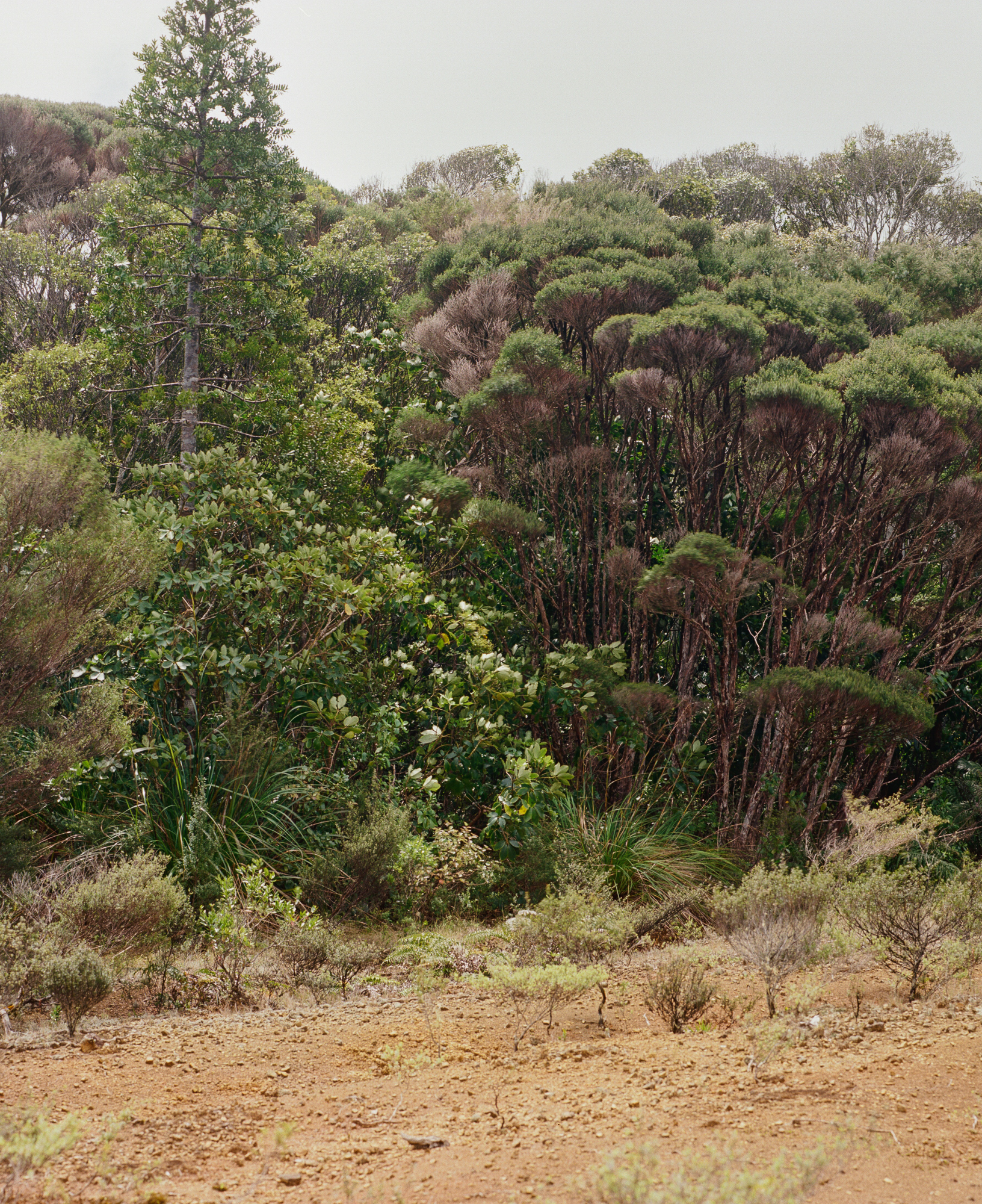
Tea Tree
&
Tourism
Species Breakdown
Kahikātoa, what Pākehā call red manuka, is the native plant people commonly refer to as “tea tree.” Manuka, what Pākehā call kanuka, is the white barked tree that tends to grow near tea tree plants, but doesn’t offer the same medicinal qualities as its famed counterpart. Scientists have identified over 20 subspecies of tea tree so for the sake of simplicity in this text, I use tea tree to refer to kahikātoa/red manuka. The following segments expand on the traits of tea tree plants I introduced in the Chapter III Species Profiles.
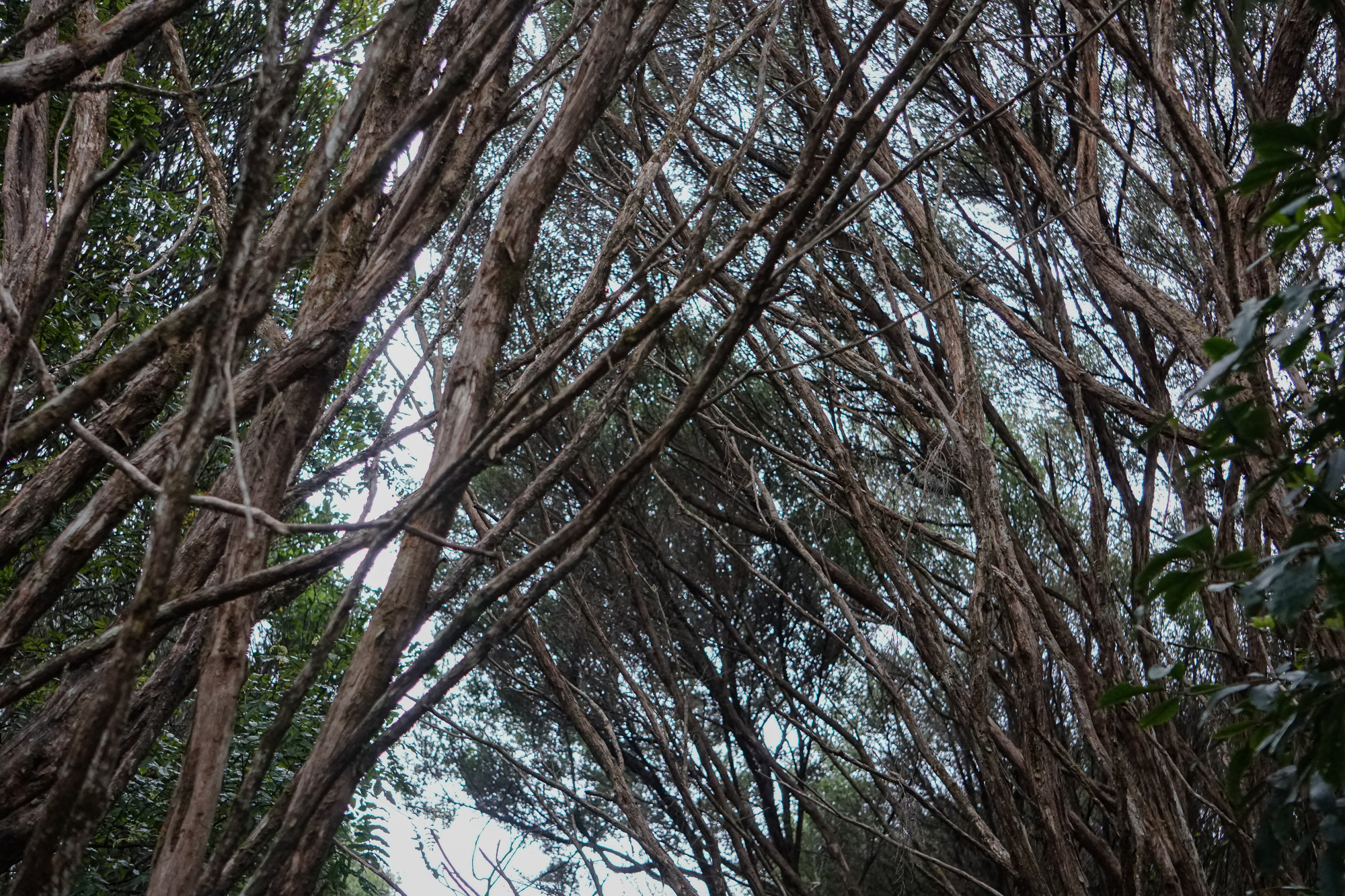
Wood & Domesticity
Māori used tea tree plants for generations before gum diggers set up camp, for example, in preparing hāngi. Traditionally, they would wrap the kai (food), usually fish, chicken and kumara, in harakeke leaves, place it on hot stones at the bottom of the umu, cover it with a wet cloth and a mound of earth to trap the heat (today they use aluminum foil or wire baskets), and leave it alone for a few hours. Tea tree wood is one of the best for smoking fish, so Māori placed it in the umu to make gaps between the kai so that it all smoked evenly.
As I mentioned, Pākehā first recognized tea trees during the kauri gum industry, while in their camps, settlers brewed the leaves into a tonic and used the wood for cooking, building huts, and as bed frames. Though they appreciated the plant for its homestead building capabilities, they burned much of the native scrubland to make way for gum extraction. Today, while it’s illegal to fell a mature tea tree without permission from the Crown and iwi kaitiaki, vast areas of scrubland are still burnt or cleared for modern cultivation, as developed land is five times more profitable than scrubland and there are no government incentives for private owners to keep native scrubland on their property. In most cases, it is prohibitively expensive to prevent invasive weeds and trees from entering scrubland long enough for it to establish itself as the first stage of native forest regeneration.

Flowers & The Honey Industry
Tea tree plants grown in Northland are highly valued because of the antibacterial properties of their flowers. While Māori have sustainably used the plant in rongoā for generations, Pākehā recognized the monetary value of the healing properties and swiftly commoditized into a national honey industry. Tea tree plants are valued according to their UMF or unique manuka factor, which measures the flowers’ effectiveness at killing bacteria and is used to designate the quality of the honey produced from the pollen of those flowers.
Since tea tree flowers in Northland bear the strongest medicinal qualities, they fuel New Zealand’s Manuka Honey Industry. As popularity for manuka products grew in the early years of the industry, so did competition. Unsurprisingly, farmers around the globe began planting tea trees for honey, claiming the same medicinal properties of honey made from native tea trees grown in Northland. Plagiarism on the international market, along with the dilution of pure manuka honey in barrels of clover to extend the product domestically, threatened the legitimacy of a unique New Zealand commodity. In response, the Ministry for Primary Industries reassessed how to measure the UMF of tea tree byproducts and revised their standard to include a more narrow window where honey qualifies as high-grade. The new standard designates plants as either mono-floral or multi-floral grade and the distinction is quantified in the price difference of honey: mono-floral runs around NZ$80/kg and multi-floral around NZ$25/kg. The change was intended to preserve the financial longevity of the honey industry and signal to the world a distinction between New Zealand products and the rest. However, under the new standard, around 80% of honey produced in Northland, the regional origin of the species that is occupied predominantly by Māori farmers, is now designated as multifloral, thus financially harming Māori producers disproportionately.

Charlie Dunn had recently tried his hand at beekeeping when we met in October, 2019. He outwardly scoffed at the distinction between manuka honey and generic Northland honey. He told me and Hugh that he prefers the cheap honey and said that the only discernible difference between manuka and generic honey is the color. Manuka is a gold color, darker than the other kinds. “It’s the rich people's honey,” he alleged. “If I gave you two teaspoons and you tasted it and they weren’t labeled. I guarantee you’d pick this [generic] honey, I guarantee it. That’s about NZ$7 a kilo and manuka honey, they are paying some crazy prices for it. I saw the news last night where they were getting up to NZ$270 a kilo because of the UMF, they call it, that’s in the honey.” He didn’t mention the medicinal properties as a factor in his preference while Hugh and I swirled the generic honey into our mugs.
Bees are the major players when it comes to producing honey because the UMF of a tea tree plant means little unless the honeybees pollinate its flowers. Like Charlie, a handful of people I met in New Zealand tried their hand at beekeeping, including Kevin Prime.
Kevin’s foray into beekeeping started as a hobby. “I was fascinated, I suppose, with bees because they seem so organized. They’ve got a great system where there is one lady in charge of the whole outfit. They can organize their staffing according to the needs of the tribe, the hive, for their communal living. When there is very little food around they won’t lay any eggs so that they don’t have offspring.” He spoke of the system’s inner workings with respect and subtle admiration. “As the flowers start to arrive in spring, the queen would lay more eggs and then they have nursemaid's and they have workers and cleaners, everyone has got a job and it lasts throughout their life. The young ones, they start off as cleaners and the first thing they do is clean out their own cell and then they clean other cells and then as you progress on you become sort of a nursemaid. You are taking food and then after that you become a worker. You are flying out and gathering pollen and bringing it back to the hive. Everything is organized so well. They join hands and they make all the wax and start filling it up with the food.
“See, a bee only lives for 35 days, that’s a total life cycle, and in that time they are a little egg and then they grow to a grub and then they are fed. The next phase after being nursemaid's and feeding the young and feeding the queen and all that and building hives is then going out and gathering honey. The last phase of their life in the last five days is as guards. The reason you are the guards is because you are dispensable. And the reason you are dispensable is because once you sting a mouse, or whoever is coming to steal from the hive, you are dead. So they lay as many males as they need, because the males are only needed for the fertilization. They don’t do anything more, nothing that I could observe, other than mating with the queen they don’t do much,” he pondered. “I became fascinated with that.”
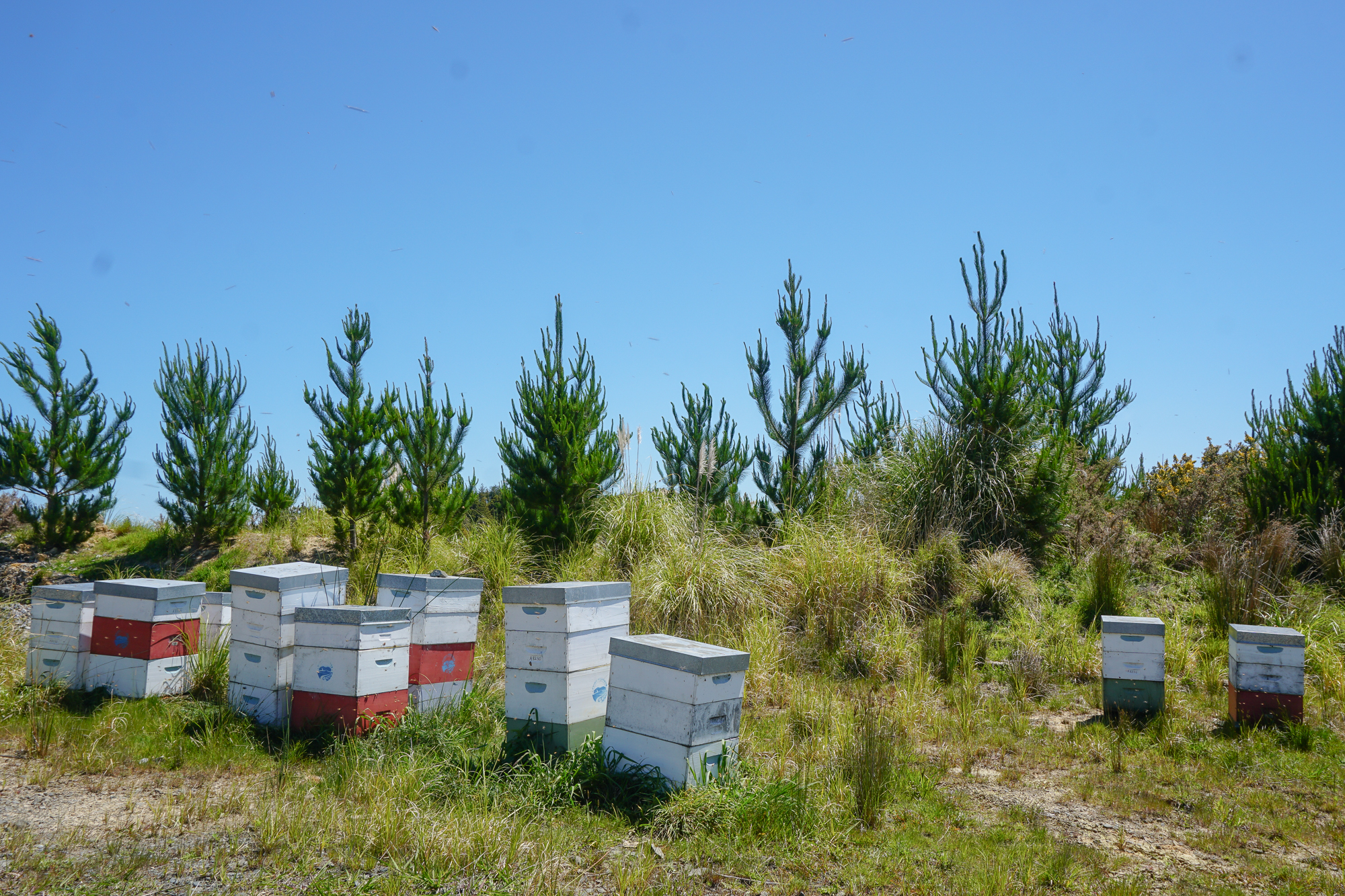
Soon his fascination manifested in work. “I just started beekeeping as a hobby really,” he said. “Started with a couple of hives, two hives. And you can just get another box and start a new hive when you see a swarm. I saw a swarm up there by some tea tree and brought a box up there and put a frame of honey in it and slowly pushed the box down and put a frame full of honey in it and a few empty frames and lowered it down and took a stick and whacked the tea tree and all the bees dropped down into the hive, filled it and then I put a lid on top and left it and then that becomes a hive. After a while, one became two, two became five and then I found out that you can buy queens and speed up this process. You can buy a frame and get a couple of frames of bees with empty frames and some honey and they’ll start a new hive. So five hives became 10, 10 became 20, and 20 became 40 as the years progressed. 40 hives isn’t a hobby, it’s damn hard work.” He paused, as if the memory had just resurfaced. “...We had a honey shed up there. I used to have all the kids going out on the quads and bringing the honey boxes down and spinning out the honey into buckets. I wasn’t very organized and the honey came pouring out of the spinner into the buckets and then we put a lid on and then the next one. After that it was a lot of hard work actually. I remember I was running a farm, I had 13 children, I was running a health trust...”
Role in Landscape
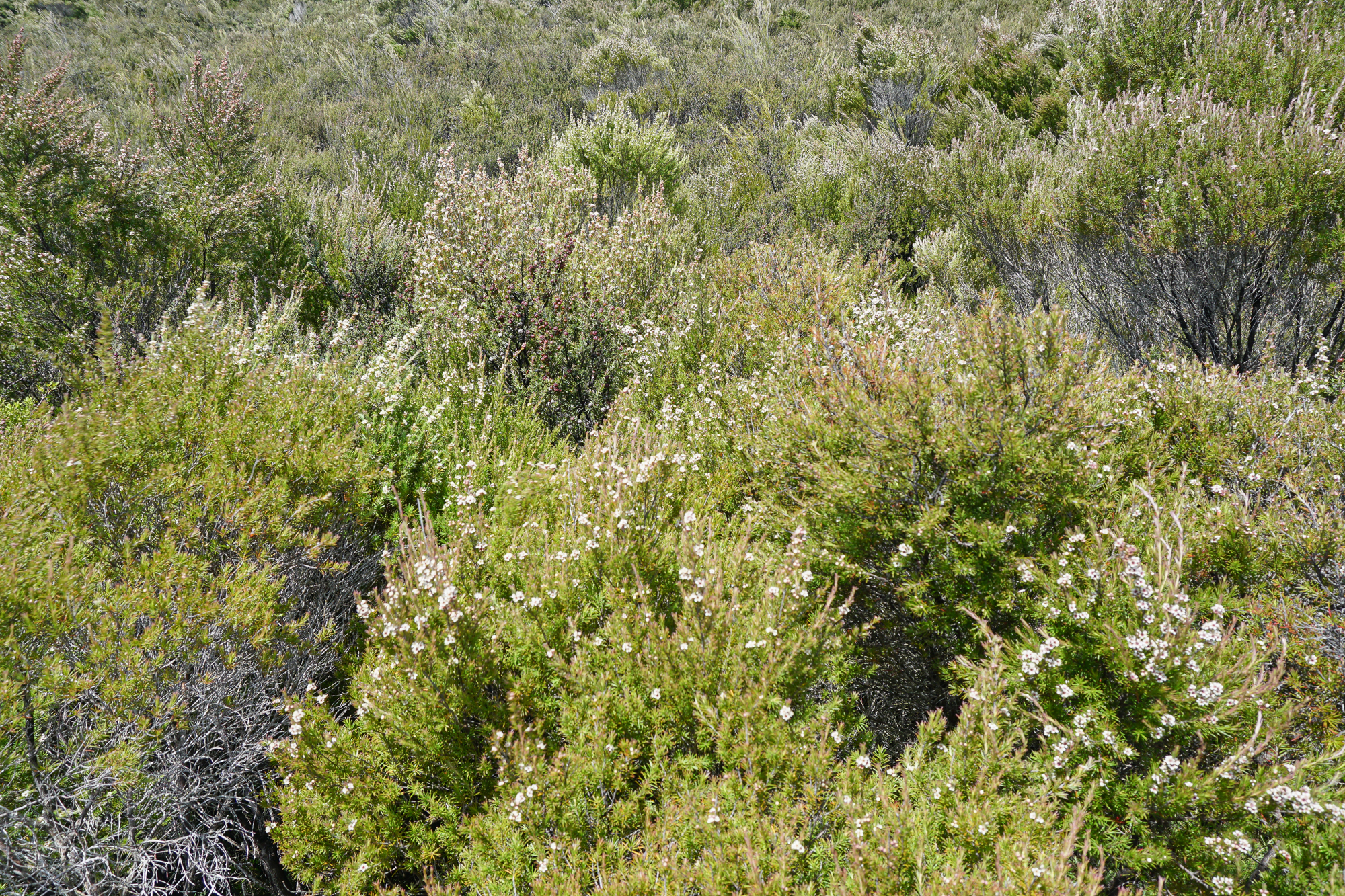
Species Relations in a Northern Coastal Landscape
Māori believe that the health of the forest is tied to the health of the ocean and people, a concept that is bound up in the traditional medicinal uses and reciprocal species relations within native ecosystems, and in the recognition that maintaining a healthy landscape for future generations requires a shift toward more sustainable practices.
A large part of their worldview is trusting the complicated reciprocal ecosystem relations that plants demonstrate. The Northern environment, for instance, provides the coastal conditions, atmosphere, soil and proximity to other native plants that contributes to the antibacterial properties of tea trees. Despite this indigenous knowledge, scientists conducted an experiment to explore ways of accommodating the growing international demand for tea tree products. They sourced tea tree seeds from Northland and planted them further south to determine the viability of extending the species’ habitat while maintaining its coveted antibacterial characteristic. For no detectable reason, the transplanted tea tree flowered beautifully, but tested a lower UMF than its Northland brethren. Since breeding the plant outside its native region did not produce the desired outcome, the experiment rationalized to Western practitioners the indigenous way of thinking that sees the environment as a holistic, responsive, interconnected, rhythmic system. In other words, Northland honey can’t be produced outside of Northland and tout the same quality, no matter how much funding and scientific prodding gets directed to the task.
Another example, which demonstrates an abridged version of these unseen connections, is that Kevin Prime observed the medicinal properties of tea trees on his property to be more potent when they grow near kumarahou. Though he didn’t require proof, he was curious, and as it turned out, the tea tree in question tested a higher UMF than the tea tree growing in a monoculture on neighboring farms.
Water Buffer & Native Habitat
As a consequence of the new UMF standard, planting tea trees with the sole intent of producing honey is no longer economically sound for many landowners in Northland. If Kevin’s stint in beekeeping reveals anything, it’s that the practice requires a significant amount of effort for a product now undervalued by the government’s narrow UMF criteria.
In lieu of the fiscal opportunity, people are planting tea trees for their other uses. For example, after noticing that the non-native plants growing in riparian areas release tannins into the water that harm native fish, Māori chose to plant tea trees along their waterways as a buffer crop. As they observed that the medicinal properties of tea trees are more potent when they grow alongside natives, they incorporated tea tree saplings into native planting programs. Once they realized that tea tree regrowth may reestablish the lost habitat of native birds that have been dislodged from their nesting grounds due to deforestation, they began the process of extending existing forests and reestablishing ngahere by planting natives in reclaimed land. After all, in order to ensure that native birds remain for future generations there must be a spread of native trees and food sources for them further out beyond their existing territory.
“You see the pine trees here?” Kevin signaled, while we stood overlooking a lush tract of forest regrowth. “There were a lot of kiwi calls in the pines. So the kiwis have adapted to living in pine trees as well. The good thing is we aren’t allowed to burn now, so we can’t burn off like in the old days. That’s what used to kill kiwis was the burn offs. You would see them pushed out from the fire and come out onto the roads drunk from the fire. There is still habitat, obviously the areas that were cleared there is no habitat, but you can see here that there is still lots of habitat now because they have all the shade now and there will be lots of bugs under there. They’d be able to survive in this really well. That was a lot of our objective was in reestablishing a tea tree. You get a lot of the understory which helps the birds. Especially the birds like kiwi, quails, pheasants.”
Nurse Crop
“After land is clear-cut, everything changes. Sunshine is suddenly abundant. The soil has been broken open by logging equipment, raising its temperature and exposing mineral soil beneath the humus blanket. The clock of ecological succession has been reset, the alarm buzzing loudly.”
– Robin Wall Kimmerer, excerpt from Braiding Sweetgrass: Indigenous Wisdom, Scientific Knowledge, and the Teachings of Plants.127 Robin Wall Kimmerer, Braiding Sweetgrass: Indigenous Wisdom, Scientific Knowledge, and the Teachings of Plants, 283.
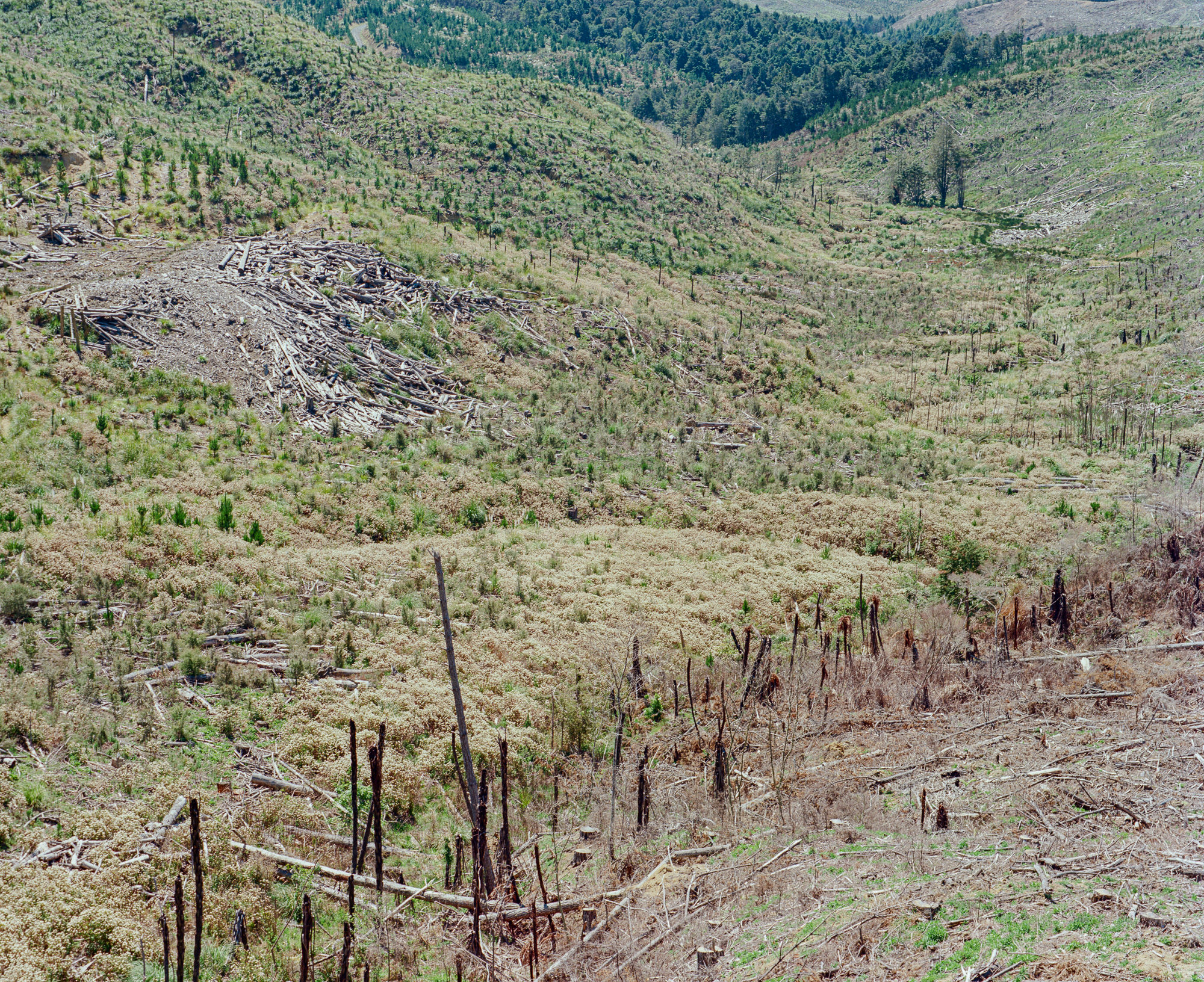
Since tea trees belong to the first stage of growth on clear-cut land, after the pioneer species, they are known as a nurse crop. Savvy landowners, who understand the qualities kahikātoa possesses, are determined to adapt their farming and utilize the nurse crop to regenerate native forests. This multigenerational outlook is not exclusive to Māori, though Māori are increasingly implementing practices to pursue it.
As Kevin transitions his land from a monoculture of pine trees to a thriving native forest, he predicts that his descendants will be able to selectively fell giant pines and conduct the sustainable, multi-use land management that might be standard across New Zealand. On the 1,000 hectares of land that is currently shifting from pine to eco-sourced tea trees, he expects the future kaitiaki to harvest rimu, matai and kahikātoa in 400 years and kauri in 700 years. While his vision stretches far into the future, today he is just five years into his plan. “We have clear-felled about 700 hectares but we are replanting 170 hectares of that in tea trees... and we are still felling pine on 500 or so hectares because we still need to make money. See that is only 30 years, but our plan in 700 years is to have it all back in native forest. So once you can generate enough income from the land if there are alternatives like through tea tree honey and other commodities, even firewood. If you can generate enough money from that then there is a way forward. And if not, you maybe have to do what the white man does and clear the land and plant grass and get cattle. But at the moment cattle is uneconomic because the cost of fencing and posts, the wire, batons they all add up. Especially in New Zealand where we have to fence off streams,” he said.
His mindset illustrates a perception of time and an approach to caring for the land that exemplifies the Māori worldview. For me and Hugh, both of us born in different corners of the Western capitalist environment of the United States, the conversations with Kevin helped contextualize how that worldview materializes in practice.
Hugh articulated this barrier when he spoke of Kevin’s 700-year vision. “We in the West have such an individual and egocentric understanding of time, where our efforts or investments must serve us in our lifetime or it is deemed worthless or economically prohibitive. This sense of time, which used to be more expansive and aligned with the time scales of other living beings, was pruned down by the same systems of capitalism that encourage the extraction of entire forests in the span of one generation, or have created the conditions for destructive global warming in under a century’s time. Kevin is transitioning away from those cycles of land management and toward a more difficult plan, one so ambitiously in harmony with the spirit of the land that it must enlist the collaboration of multiple species and many generations of descendants.”
Later Industries in Northland
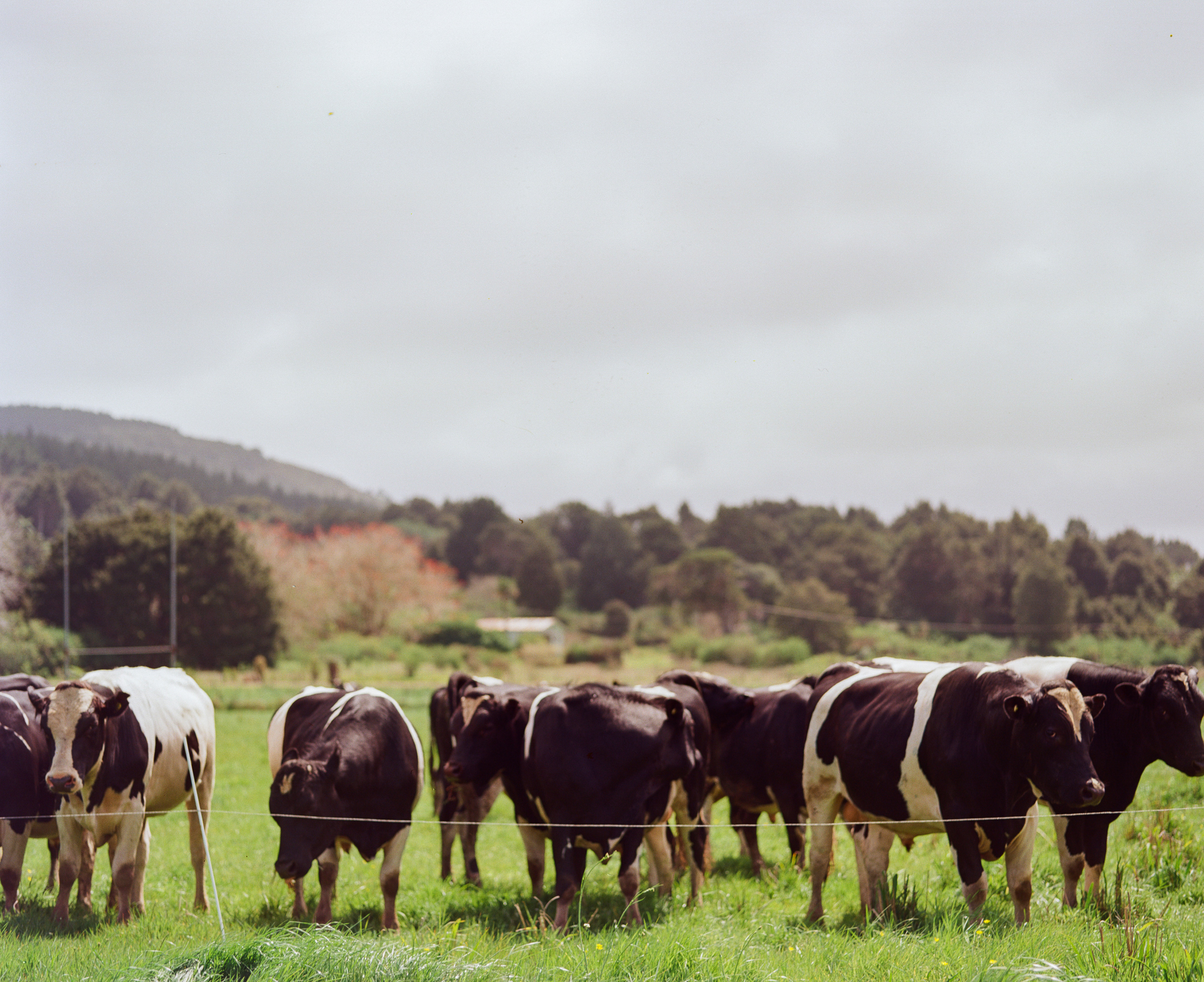
As Northland’s forests thinned and gum reserves depleted, dairying and cheese production took over as an economic mainstay, though that too fell away after the closure of the Motukaraka Dairy Cooperative in 1953. Meanwhile, industries for pine tree felling, tea tree honey and beekeeping, farming, livestock and wine co-opted the residual land of kauri milling and gum digging. The 20th century saw these new industries butting into each other, vying for superiority and a leg up in the economic tide. As time ticked on, those politically incentivized and formerly lucrative industries diminished too. For example, only a fraction of livestock still remain on Kevin Prime’s farm where he once had 600 cows grazing across the property. Today just 140 cows graze on a few acres of grassy flats. Over the last few decades, while Kevin has pivoted from livestock to pine to tea tree, other Northlanders have chosen to supplement their livelihoods by using the land as a resource and promoting local ancestral whenua as a destination for visitors.
New Zealand, with its ecological, cultural and geologic wonders, has been subjected to investigation and exploration by international navigators, scientists, researchers, anthropologists, botanists and historians over the last century. Aside from their political or academic motivations, these investigations have forged the way for a robust tourism sector to take root in the country. While people in Northland may acknowledge the economic benefits of having a visitor economy encompass their area, local attitudes toward opening up are largely cautious, if not wholly adversarial. In fact, very few people I spoke with met the subject with ambivalence.
Since first contact with Europeans, Māori have never ceased to defend their traditional authority over the landscape and fight to preserve its status as a cultural and spiritual entity to this day. While they have made progress in asserting their claims to the land and establishing their presence in government, they have also had to bear the burden of enduring recent decades of domestic development. Just as kauri timber, kauri gum and manuka honey were extracted from indigenous space and thrust into the economy at an industrial scale with Pākehā bestowing upon Māori the ‘option’ of participating, the natural wonders of Northland became commoditized as the travel and tourism industries swept the country. This time around, both Māori and Pākehā shared in establishing commercial enterprises to cater to the new influx of visitors.
Apart from the densely populated centers of Auckland, Whangārei and the Bay of Islands, most communities in Northland are rural and maintain modest infrastructure. Māori in those areas speculate that the economic gains tourism offers, while attractive and in many ways necessary, are not without sacrifice. The sacrifice, in their eyes, is further exposing their whenua to strangers who time and again lack the respect necessary to preserve their taonga lands for future use. The Northland region in particular is more sensitive than other areas in New Zealand with respect to tourism because it bears many of the country’s paramount cultural sites. With that tenure comes the charge of championing and protecting those sites so that they may survive to sustain the wellbeing of life for generations to come. Māori take on the role of kaitiaki or guardians, and as such, they must balance an instinct to safeguard their natural resources from exploitation with the knowledge that educating and introducing visitors to the cultural significance of those resources is the most effective way to secure a collective preservation of the taonga in perpetuity – be that through advocacy, compliance or financial support.
After all, a growing issue Māori face is the diminishing connection that millennials and folks in generation Z feel to their heritage and land. Today, the dislocation young Māori feel has its origins in the restrictions on Te Reo in schools and the suppression of tohunga that permeated their great-grandparents, grandparents and parents’ generation. As in each generation prior, some young Māori seek the connection through learning Te Reo and listening to the kaupapa shared at their marae, whereas others, especially the newest crop of young people, may require more guidance from their community to reinvigorate their dormant, intangible ties to the land. Considering that, some Māori view the engagement with tourism and subsequent dissemination of historical traditional knowledge regarding their land and its resources as an opportunity to invest in their own young peoples’ living connection to the ngahere.
While Northland Māori are more knowledgeable about the landscape in their region than people from other parts of the country, it is nearly impossible for them to maintain control of the narrative that surrounds their taonga works and species. For instance, it is hard to find an endorsement for Northland that does not feature a kauri tree. Kauri are a staple in national advertisements, especially ones that aim to elevate Northland as the country’s epicenter of ecological, historical and cultural significance by promoting the living kauri giants of Waipoua. The abundance of kauri and native wildlife imagery, like the silver tree fern and brown kiwi bird, in national advertisements has motivated some Northland Māori to capitalize on the exposure of these taonga and offer their cultural perspective through the tourism sector. Then, at least, they may offer visitors a more holistic view of Northland, one that includes the cultural context missing from some Pākehā-run enterprises.
Purely recreational tourism occupies a hefty segment of the industry and exists throughout much of the country, including some denser townships in Northland. While the environmental, social and economic consequences of recreational tourism are vast, Hugh and I focused on cultural and eco-tourismfor this project.

Cultural & Eco-tourism
Every entrepreneur pursuing a venture in Northland must balance opportunities for profit, negotiate how to maintain control of the land, and – if they desire the support of iwi – communicate a clear message to the community that includes the perspective of tangata whenua.
In terms of tangata whenua, Charlie Dunn provided us one such perspective on tourism. For small-scale ventures, like horse trekking trips or controlled boat rides across the Hokianga harbor, Charlie is willing to engage in the visitor economy. As for large-scale use or development of the landscape, he is determined to keep his family’s land free from the exploitation rampant elsewhere in the country. As I mentioned in chapter VI, in addition to the 39 acres of land he inherited from his maternal grandmother, Charlie is also the kaitiaki of 35 acres on the Northern head of the Hokianga Harbour. The land has been under the care of his family for generations, and Charlie’s decision to abstain from developing it is based less in personal ethics or a desire to earn money than in his familial obligation to maintain a balance of ecosystem functions in the Hokianga.
Around 25 years ago, Charlie’s grandfather had ideas of planting the land thanks to some nudging from the council. However, Charlie’s uncle was opposed to altering the landscape and brought Charlie to the council meeting where the topic was being discussed so that he could hear him argue to the council and visiting experts that the land should be left alone. The council heeded Charlie’s uncle’s advice on that occasion, as must have happened on multiple visits thereafter, because the land remains undeveloped.

Eventually, as if to drive home his point, Charlie’s uncle sat him down to discuss the matter privately. Mimicking him for me and Hugh, Charlie boomed, “Charlie, this is how it works, this is why the sand dunes should be left there. They’ve been there ever since before people came to this place and were owning this land, or were custodians of this land.” While he spoke, Charlie arranged the sugar, honey, milk jar and three mugs that rested on the table to replicate the geography around the sand dunes. “The strong westerly winds, which we get a hell of a lot of, the sand gets washed up by the water and picked up by the wind and blown over these sand dunes. And that gets blown into Hokianga and taken right up to Rawene, right up to the harbor and taken to the mud flats.” He took a beat, and then said, “Here is this guy, doesn’t know how to read, never went to school, and he’s telling how this all works, how the land works. The tide brings the sand in, the sand gets picked up and blown over here. From this side, the sand from the westerly wind is coming in all the time and builds up these sand dunes, what you see in Opononi, that gets carried up into the shores of the Hokianga, just doing its thing.”
The introduction of sand carried by the westerly winds to the Hokianga is essential for the ecosystems within the harbor to function properly. “Take away that sand then you just have mud. A lot of the places in the Hokianga are mud flats anyway. But that’s mud mixed with sand, it’s not just mud. That’s the difference,” he pressed. “That’s why you can walk on these mud flats and get flounder and oysters and pipis, because the sand is coming in from the harbor and mixing with the mud. Otherwise, you’re just going to get sludge.”
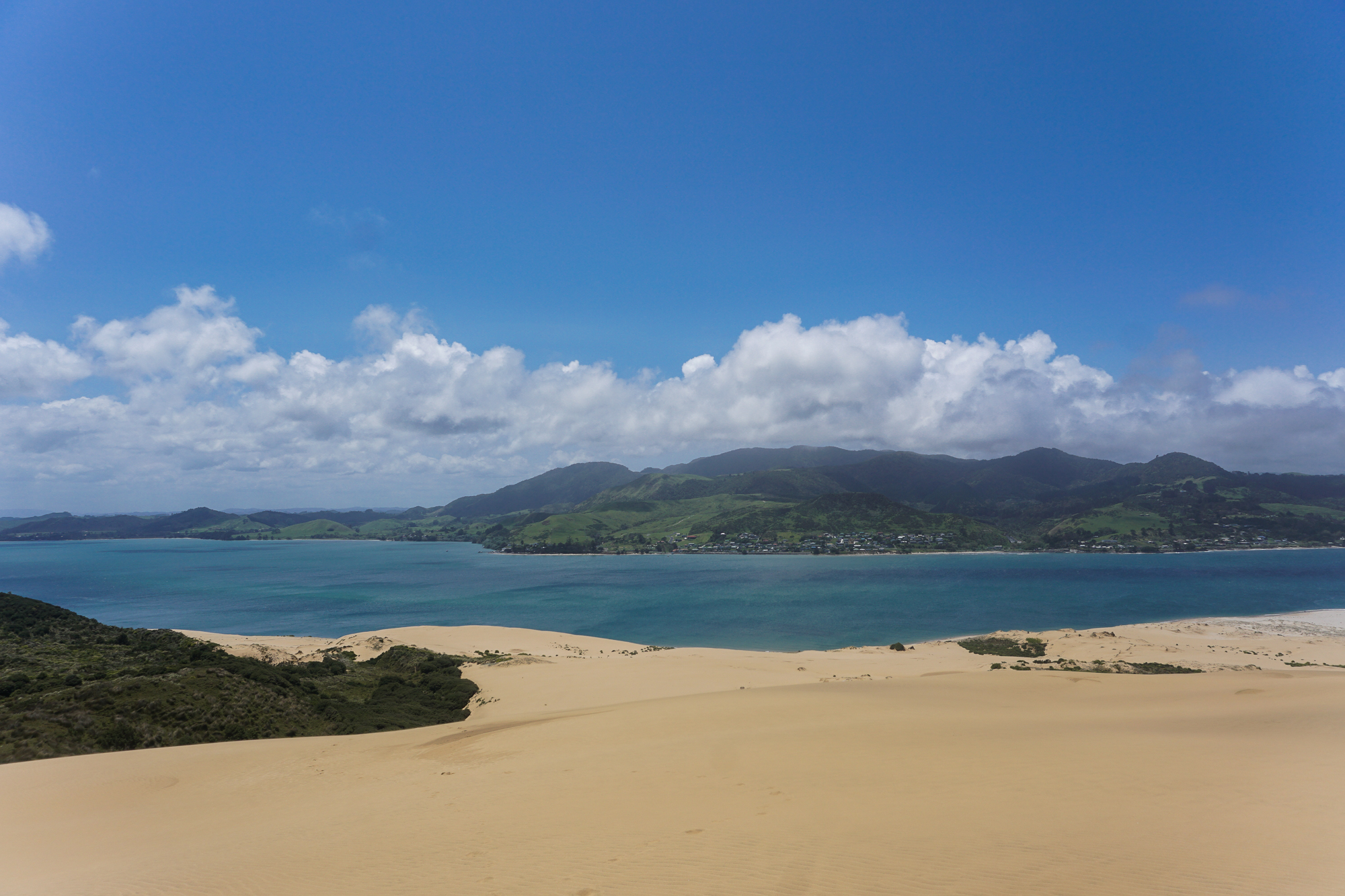
“The land has been handed down from my great-grandfather, to my grandfather, to my father, to me,” said Charlie. “And when I’m gone my son will take over. That’s how it stays in the family all of these years. A lot of people want to buy it, but I know what they would want to turn it into. 50 plus years. All the Māoris want a piece of it. And whoever takes over the stewardship after me, I hope they do the same with it, not have houses, etc. I’m fine with camping and that. We have tours go over there and they pay our trust a few dollars and they keep it clean.” The tours are run by a man named Peter Clarke, a cousin of Charlie’s, and Charlie made his desire to keep control in the whānau clear when he added, “...he’s related, so it works. The land remains the same, it doesn’t change.”
“I suppose once I’m gone everyone will jump in and change it,” he said, acknowledging that later generations may diverge from this protective mindset, ignore the reciprocal ecosystem functions and choose to develop the land for economic gain. “But, I hope they don’t, I don’t think they will. I have a lot of sons and they all know what the kaupapa, the story, is. That’s how my grandfather wanted it, that’s how my dad wanted it. Just for it to remain how it is, you know?”
As times change and more Māori in his area enter the tourism sector, the pressure to further open up his land to public use has increased. Charlie is strong-willed, though, and is confident that his children and community know what he wants for the land. It also helps that he already has one toe dipped in the market through Peter Clarke’s boat rides to the dunes, demonstrating his willingness to test the waters.

Hugh and I went to the Hokianga sand spit some weeks after meeting Charlie. We took the boat ride from Peter Clarke across the harbor and were soon dropped off on the shore, set to wander on the edge of the dunes to get a sense of the formerly forested terrain. I stowed my flip flops to take on the dunes barefoot and in a matter of minutes we walked the planes of a desert. Though the dunes only stretched around 9 miles, with the buildings of Opononi clearly visible across the water, they somehow exuded an impression of an endless sandy moonscape. Occasionally, we encountered footprints from previous trampers who had chosen a version of our path, for unlike the invisible tracks of trampers in the bush, these visitors left behind their ghostly mark. As the piping hot sand burned my soles, I became keenly focused on how long ago those trampers had pressed their feet into the sand.

The Hokianga is significant throughout each stage of Northland’s history. A mythological and historical point of discovery, a trading port, a logging epicenter, a destination for lumber milled further inland, traditional hunting and fishing grounds, a protected land and a tourism beacon. Its lasting presence makes the Hokianga Harbour an effective vessel into the past. Inside the bush, where there was little evidence of human development or infrastructure, I was able to envision a time before forests were stripped and trees bled. Seeing the bush as it may have looked in the past helped me understand how the power of the forest persists through time. On the Hokianga dunes, I felt a similar urge to envision the landscape as it once was and, despite the drastically different appearance of the rolling sand dunes in front of me to the forested hillsides in the age of kauri felling, the relative isolation and sheer emptiness of the spit allowed me to imagine standing in the same place a century prior. After all, silence in the bush and silence on the dunes was the same silence with eyes shut.
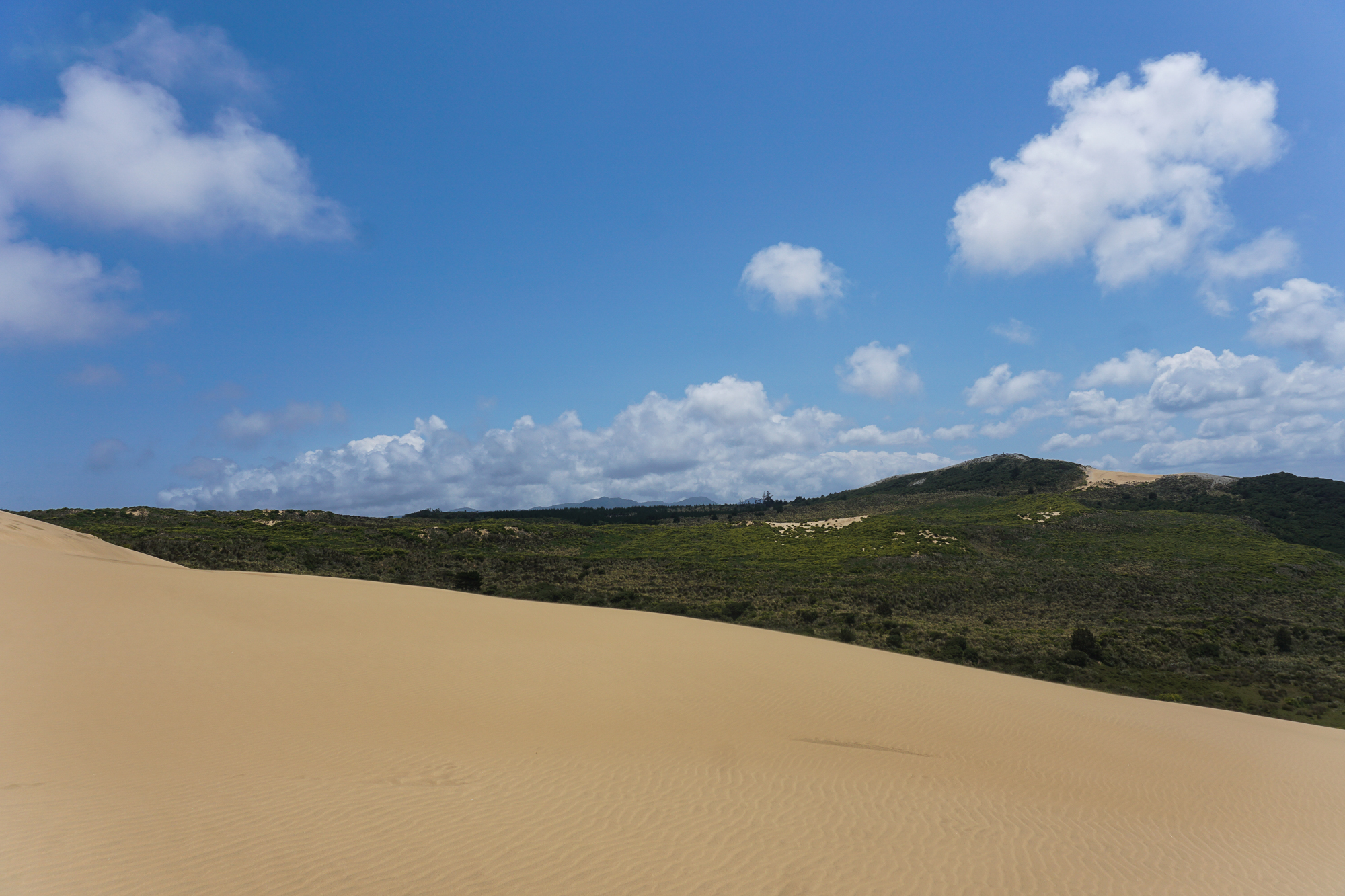
Small crops of yellow kumarahou and other mesquite shrubs littered the sun baked drifts, only the very tops of which still had tree cover. The meek patches of plant life provided negligible spurts of shade if you were willing to crouch in their shadows and Hugh and I considered each spurt as we negotiated where to stop to eat our PB & J sandwiches. We tramped to the western end of the dunes rather than ascending the hilltops, and never saw the old kauri stumps that Charlie promised. As we ascended to the summit of a dune, I felt the landscape differently than I did while viewing the spit from Opononi wharf across the harbor. From the new vantage point, we could make out the tops of the Warawara bush stretching to the north and it wasn’t hard to imagine the expanse of uninterrupted forest that once licked down those hillsides and over the spit to where we stood among shrubs. Without moving, I considered the temptation to utilize the space for tourism and recreational sports. I pictured ATV and quad bikes zooming down the dune faces and flattening what little shrubbery could withstand the baking heat. I thought about the small wharf that may be constructed to tie up the motor boats that carry day trippers to picnic along the picturesque beach coves that dot the shore. I imagined a snack shop that may provide alternatives to the PB & Js of future visitors. I looked out at the dune as a gust of wind lifted its top layer of sand and hoped that Charlie’s children heard him.
Public Opinion, Local Engagement & Eco-Nurseries
On November 14th, 2019, Hugh and I met with Ana Bercich to discuss her pursuits in eco-tourism and the value of native planting in the Hokianga region. Ana, now 60 years old, grew up in the area. Similar to Charlie Dunn, she went to school in Panguru and Auckland and matured whilst living in the country surrounding Warawara. As an adult she lost her husband and, with her parents already gone, she decided to move to Sydney, Australia, with her children. After spending seventeed years overseas, experiencing metropolitan Sydney and the vast outback, she returned home to run her family’s farm.
We talked while standing on the grassy ledge between Mitimiti beach and the edge of the Warawara, a rocks throw from where Hugh and I first locked eyes with Charlie Dunn. I was keenly aware of his house hidden up on the ridge, a constant reminder of life close to the bush. The ocean breeze swirled in the air as we swayed in time with the tihetihe (spinifex) grass that consumed the sand dunes in front of us. As the morning fog slowly dissipated, Ana spoke about the local school shifting toward a kura-a-iwi, kaupapa Māori (Hapu-based curriculum), her entrepreneurial venture to tap into the tourism sector of Hokianga, and the public opinion of locals regarding visitors on their whenua.

As the treasurer of Matihetihe marae (named for the tihetihe that grows on the coastal sand dunes), she believes that adapting to tourism would benefit her community. Ana is in the process of developing businesses in the Hokianga area through eco-tourism and an eco-nursery. She is motivated to keep the money tourists bring into the area circulating internally and advancing Māori-run businesses and hopes that her eco-nursery may foster much needed native planting in Mitimiti. One option she proposed to achieve those goals was to offer marae accommodations, which would allow tourists to stay longer and spend their dollars in the area as opposed to leaving for a feed or a rest before returning the next day. To that end, she intends to keep everything eco-friendly, which means avoiding cars or other vehicles as a rule, and opting for electric or fuel-efficient alternatives when transportation is unavoidable. She also hopes to keep the operation small and intimate and to offer a “full-on cultural experience through korero (dialogue) and actually walking on the whenua.”
Since not everyone in Mitimiti shares Ana’s enthusiasm or optimism for tourism, getting people on board isn’t easy. Still, Ana predicts that if she can provide the framework that illustrates what a booming tourist economy may look like, then all the locals need to do is look at her plan and identify where they and their individual services may fit into it. The people who welcome her outlook are mostly those who, like Ana, have gone overseas and returned back home or those belonging to the younger generation. Folks who have lived in Mitimiti all their lives are less inclined to open up their whenua to tourists who often lack respect and a proper understanding of how to interact with the land. Their concern links to a larger theme of the deeply extractive exchange that much of the tourism sector signifies. One wherein people pay for experiences, usually taking more from the land and culture than their monetary submission offers the kaitiaki and landscape in return.
Ana’s solution for this tension lies in controlling the exchange of cultural knowledge at the core of her tourism venture. She described her method as a slow and controlled shift toward opening the area to visitors, one that adapts with changes as needed and is fully overseen by tangata whenua. Inviting local whānau to have their own businesses set up and presented as different options for tourists is also essential for the transition to be a success. “There is heaps of potential [in this concept of tourism]. It’s just opening up the locals to that. As soon as they hear tourism they go ‘ah we don’t want people trudging about,’” Ana explained. “But, really, if we thought about it, that is an income stream that’s easy and right from home. You are not going to an office in Kaitaia, you’re not going to Kerikeri. That’s my thought on how tourism can help our whānau here without too much capital investment really. There’s people already thinking about it because of the korero,” she proclaimed. In hindsight, I wonder if Ana also anticipated that the information-sharing involved in her cultural tourism ventures would elevate the visitors' sense of connection to the land and therefore increase the level of respect and care they show toward it.
Ana’s idea for the eco-nursery was inspired by the actions of a landowner of a beef and sheep farm in Mitimiti. In June, 2019, the owner started selling off all the sheep from the farm, essentially removing one food supply from the area. He followed that up by blanket spraying the hills to prepare them for pine planting, which he had chosen as the replacement for his livestock income. He didn’t ask the tangata whenua whether it was okay to sell off a food source or spray the land to grow pine for profit. He didn’t think about the locals and how they relied on lamb to supplement their diet, or that they always ordered mutton to feed the people after hui (meetings) at the marae. He didn’t think and it made Ana livid. When she confronted him about it, his rationale was money. He wasn’t earning enough with pasture so he turned to the next industry available to him, and according to Ana, the government’s 1 Billion Trees Program was too good an opportunity to miss.
Ideally, Ana’s eco-nursery will offer an option for future landowners to consider, besides pine, when they face the decision of what to do with their land. It is also another step for Ana toward becoming a social enterprise and reintroducing native vegetation outside of the ngahere. With her eco-nursery, Ana intends to get native trees back on the whenua in place of the pine and other introduced species that have gained acreage over the years. To prepare, she has already started eco-sourcing seeds from the area, after which she grows and sells them on as a business, and plants them in vulnerable spots in order to heal hurting ecosystems. For example, after noticing that water flow is fine under the canopy in the Warawara but low in the main creek that serves as the primary water supply for the area, she concluded that problems arise once the water leaves the ngahere and the companionship of the native plants in the bush. She theorized that planting natives may simulate an ecosystem like the one higher in the ngahere where the water flow is better, and responded by fencing in rivers with native plant buffers in order to get the waterway problem sorted.
As of now, she has persuaded forestry people and landowners to reestablish natives on their land by arguing that the diversity of trees reflects the health of the region. Once the business is up and running, she plans to offer projects that tourists can partake in to plant the eco-sourced seedlings across the whenua. Natives like tea tree, kawakawa, tihetihe, pohutukawa, totora, cabbage trees and karaka are some options she wants in the nursery stockpile. The specific selection will depend on what is available in the area and which plants are able to grow – natives are a bit trickier to initially establish than introduced flora.
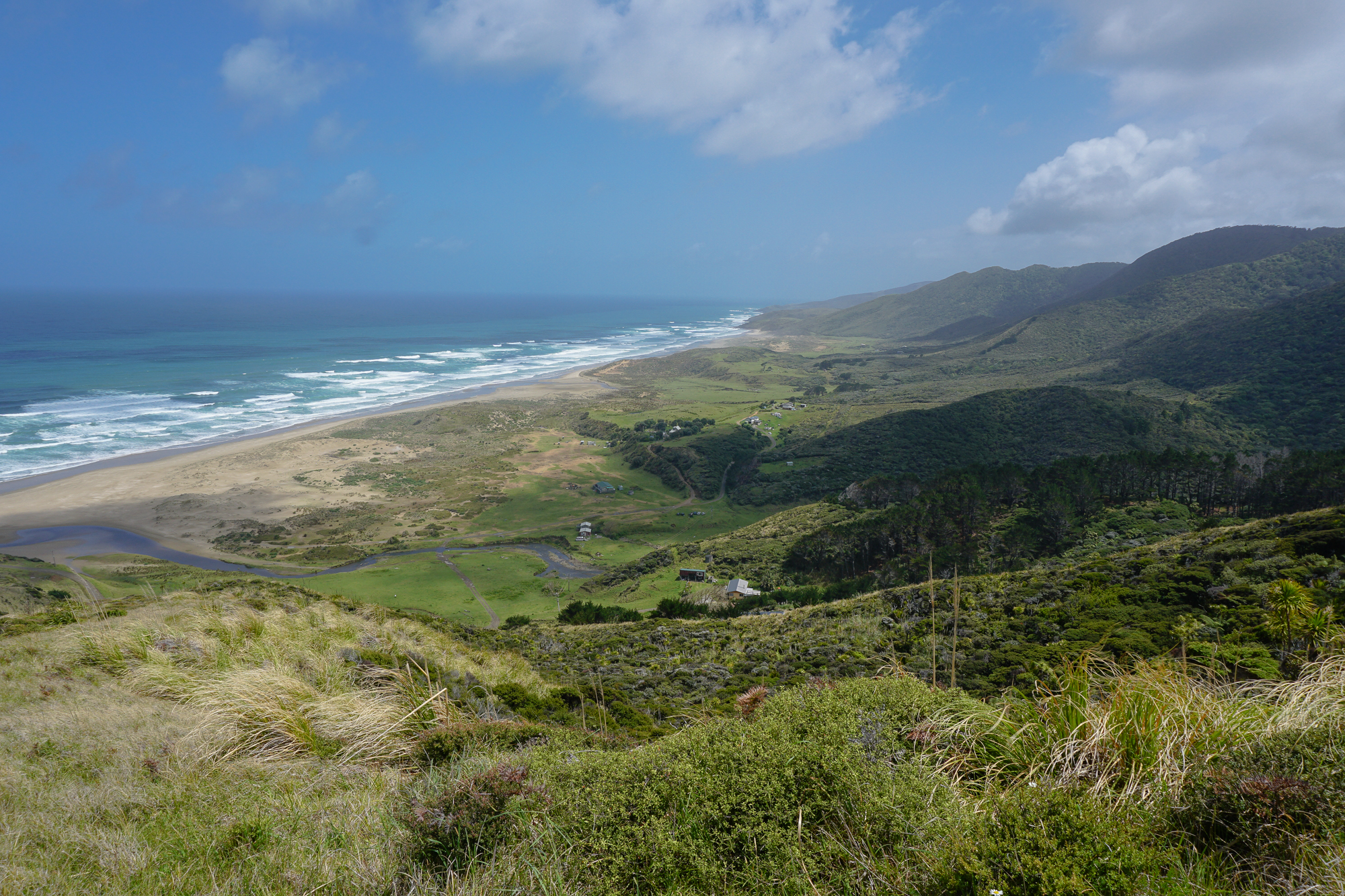
Cultivating patches of native growth starts Mitimiti on a path toward reinvigoration. With healthy natives established, locals will not only have a reliable food source to feed their community, but they will also be in a better position to make money if they decide to open up their land to tourism. For this, Ana offered the example of Te Rarawa up in Kaitaia. Te Rarawa promoted a return to older methods of land use to a successful end by encouraging people to follow the path of their tūpuna and grow their own food. After observing their efforts, Ana reported that the participants have a newly invigorated sense of connection to the land and in some cases even a lucrative bonus once they sell their excess produce to the food market. She mused about how her community may adapt their land use to a similarly sustainable end. “It’s putting that idea into the open so our people grasp onto it and go, ‘oh yeah, I’ll give my whenua.’ They just need a bit of a hand, not a hand out, but a hand up, you know?” she said, at our conversations’ end.
Ana politely declined to join our tramp into Warawara, which Hugh and I would commence shortly thereafter. She assured us, however, that our day in the bush would likely top her day of tending to a sick cow in Kaitaia. We watched as she drove down the metal road leading back into Mitimiti and then made ourselves PB & Nutella sandwiches while listening to the waves churn against the shore.
Notes
- Robin Wall Kimmerer, Braiding Sweetgrass: Indigenous Wisdom, Scientific Knowledge, and the Teachings of Plants, 1st ed. (Minneapolis: Milkweed Editions, 2013), 283.
